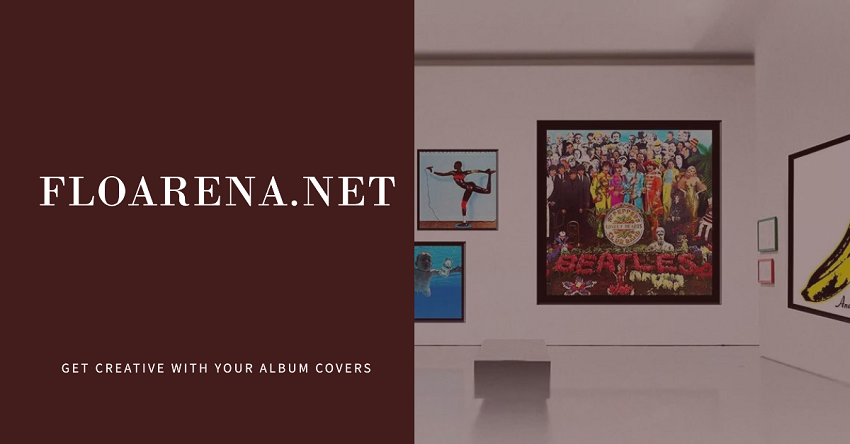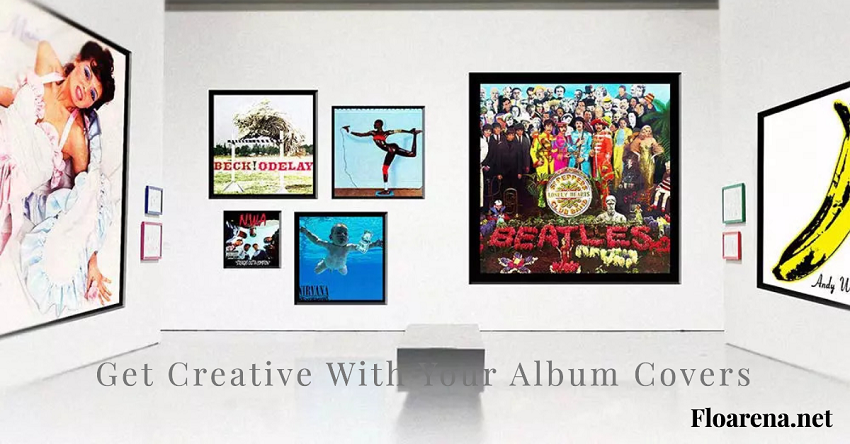Album covers remain a crucial element of music presentation, serving as the visual gateway to your sonic world. Whether you’re an independent artist or a graphic designer working with musicians, learning to get creative with your album covers can significantly impact your music’s visibility and memorability in today’s crowded marketplace.

Understanding the Importance of Album Cover Design
Album artwork does more than just look pretty—it’s a powerful marketing tool that can:
- Create an immediate emotional connection with potential listeners by conveying the mood and style of your music through carefully chosen visual elements and color schemes
- Help establish your brand identity as an artist, making your work instantly recognizable across streaming platforms and social media channels
- Capture attention in playlist thumbnails and digital marketplaces where visual appeal can influence listening decisions
Essential Elements of Effective Album Cover Design
Typography and Text Placement
The way you handle text elements on your album cover can make or break the design. Consider these approaches:
- Experiment with font combinations that reflect your music’s genre while maintaining readability across different sizes
- Play with text positioning to create dynamic compositions that guide the viewer’s eye through the design
- Consider minimal or hidden text approaches for a more artistic statement, especially if your name recognition is already strong
Color Psychology and Palette Selection
Colors evoke specific emotions and can reinforce your music’s themes:
- Use contrasting colors to create visual impact and ensure your cover stands out in digital thumbnails
- Consider color harmony principles to create cohesive designs that feel intentional and professional
- Research color psychology to ensure your palette choices align with your music’s emotional content
Creative Techniques to Explore
Photography-Based Approaches
When working with photographs for your album cover:
- Experiment with double exposure effects to layer meaningful images and create depth
- Try unconventional cropping to highlight specific elements or create intrigue
- Incorporate motion blur or intentional imperfections to add energy and emotion
Digital Art and Illustration
Digital techniques offer unlimited possibilities:
- Combine hand-drawn elements with digital effects to create unique hybrid aesthetics
- Use generative art tools to create one-of-a-kind abstract designs
- Explore 3D rendering software to create surreal or futuristic imagery
Mixed Media and Collage
Mixing different artistic mediums can yield striking results:
- Combine physical materials with digital manipulation to create textured, layered designs
- Use scanning techniques to incorporate handmade elements into digital compositions
- Experiment with torn paper, vintage imagery, and found objects to create distinctive collages
Tools and Resources for Album Cover Creation
Software Options
Several tools can help you get creative with your album covers:
- Professional options like Adobe Photoshop and Illustrator offer comprehensive design capabilities
- Budget-friendly alternatives like Canva and GIMP provide accessible entry points for beginners
- Specialized apps for mobile devices allow for quick experimentation and on-the-go design work
Design Resources
Take advantage of available resources:
- Stock photo websites for high-quality base images and textures
- Font foundries offering unique typography options
- Online tutorials and courses specific to album cover design
Best Practices for Modern Album Cover Design
Size and Format Considerations
Ensure your design works across all platforms:
- Create your artwork at a minimum of 3000×3000 pixels to meet high-resolution requirements
- Test your design at various sizes to ensure it remains impactful as a thumbnail
- Consider how your design will appear in different aspect ratios across streaming platforms
Branding Consistency
Maintain visual coherence across your releases:
- Develop a signature style that can evolve while remaining recognizable
- Create design systems that can be applied across singles, EPs, and albums
- Consider how your album artwork fits within your broader visual identity
Common Pitfalls to Avoid
When you get creative with your album covers, watch out for these common mistakes:
- Overcrowding the design with too many elements, making it difficult to read at smaller sizes
- Using low-resolution images that appear pixelated when scaled up
- Following trends too closely without adding your unique perspective
Legal Considerations
Protect yourself and your work:
- Ensure you have proper licenses for any stock photos or fonts used in your design
- Document your design process in case of copyright disputes
- Consider registering your album artwork copyright for additional protection
Drawing Inspiration
Research and Reference
Develop your creative vision through thorough research:
- Study album covers across different genres and eras to understand what works
- Create mood boards to collect and organize visual inspiration
- Analyze successful album covers in your genre to understand current trends
Conceptual Development
Build meaningful connections between your music and visuals:
- Listen to your music while brainstorming visual concepts
- Write down key themes and emotions from your songs
- Sketch multiple concept variations before settling on a final direction
Future Trends in Album Cover Design
Stay ahead of the curve by considering emerging trends:
- Interactive and animated album covers for digital platforms
- Augmented reality integration for enhanced viewer experience
- Sustainability-focused design approaches using eco-friendly materials for physical releases
Conclusion
Getting creative with your album covers is an essential aspect of music presentation in today’s visual-first world. By combining technical knowledge with artistic experimentation and staying true to your musical vision, you can create compelling album artwork that enhances your music’s impact and helps build your artistic brand. The most memorable album covers often break conventional rules while maintaining professional quality and visual impact. Don’t be afraid to experiment and develop your unique approach to album cover design.






